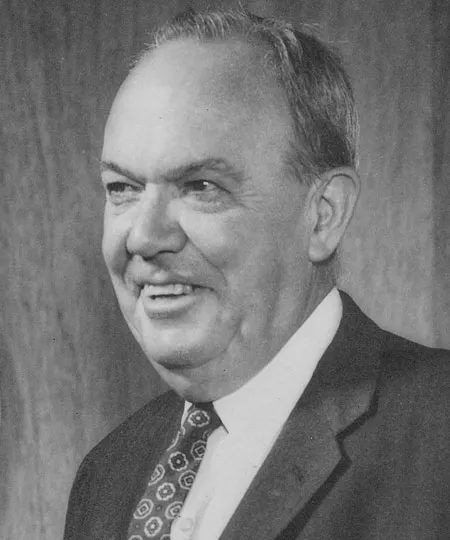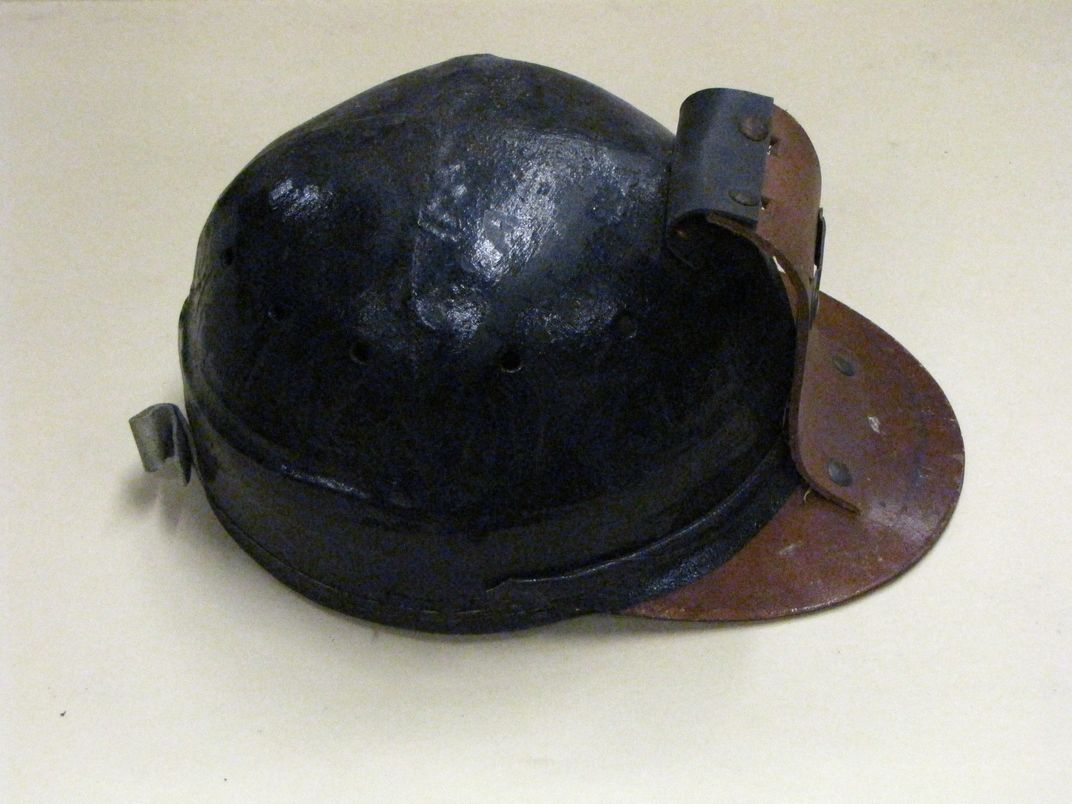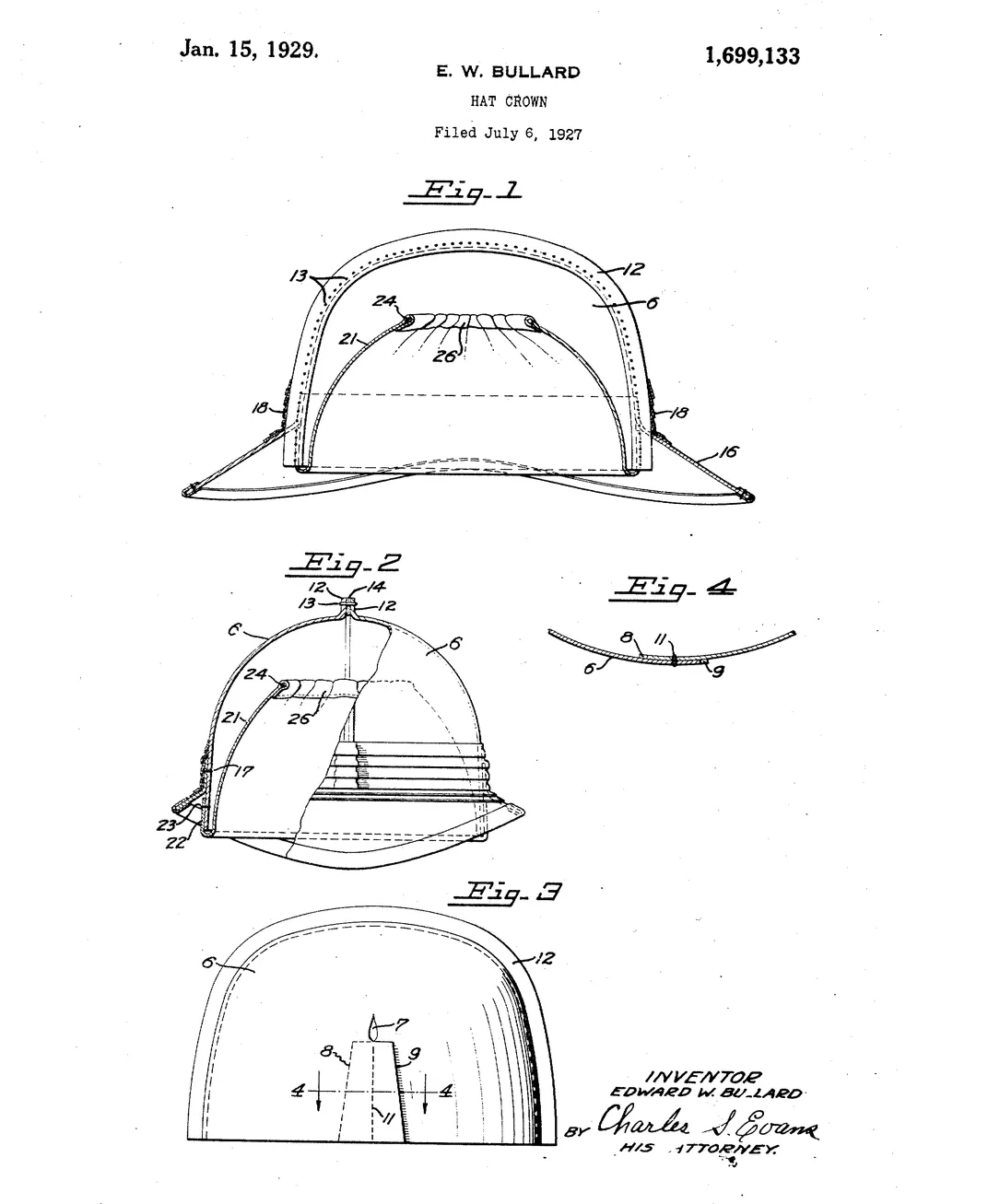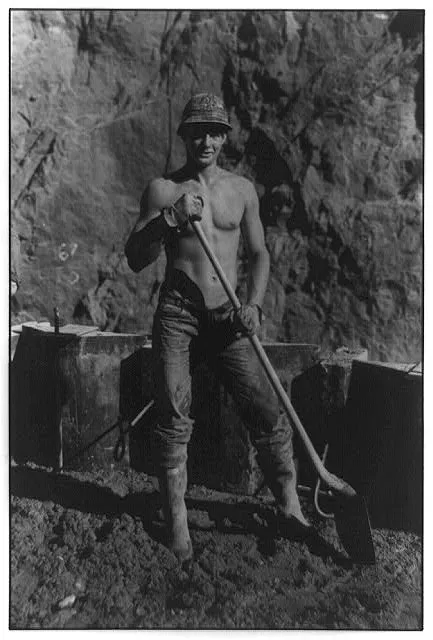The History of the Hard Hat
With some canvas, leather, shelac and black paint, inventor Edward Bullard helped America usher in a new era of workplace safety
/https://tf-cmsv2-smithsonianmag-media.s3.amazonaws.com/filer/cd/1f/cd1f132e-ac2f-46d9-a869-cdb665c9e33e/hardhat_photoillustration_copy.jpg)
During World War I, death occurred on an apocalyptic scale in the killing fields of Europe. The advent of continuous-fire machine guns and modern artillery with high-explosive shells obliterated millions of lives in an era of bloody trench warfare.
One saving grace was the helmet. Countless soldiers were able to return home to their loved ones because of the protection provided by the heavy headgear. Bullets, shrapnel and flying debris often glanced off this sturdy safeguard that shielded the head from harm.
A young lieutenant in the U.S. Army’s cavalry witnessed firsthand the effectiveness of the helmet and realized its potential in a postwar industrial world. In 1919, Edward W. Bullard came home to the family business in San Francisco and began developing a safety hat for peacetime workers.

Called the Hard Boiled Hat, this canvas and leather headgear was the first commercially available head protection device. Now worn by millions of workers, Bullard’s hard hat revolutionized the safety-product industry, earning him a spot in the National Inventors Hall of Fame. He will be posthumously inducted in a ceremony on May 7 in Washington, D.C.
“Bullard’s invention came at an important time,” says Peter Liebhold, curator in the Division of Work & Industry at the Smithsonian’s National Museum of American History, which has three examples of the Bullard hard hat in its Mining Lights and Hats collection. “Mines were one of the first regulated work places in America. His hard hat protected employees and limited the liability against employers.”
Started in 1898, the E.D. Bullard Co. was founded by the inventor’s father Edward D. Bullard. The manufacturer produced carbide lamps and other equipment for miners in California, Nevada and Arizona. After returning from the war, the son began developing ideas for affordable safety headgear that would protect miners.

While recognizing that the metal “doughboy” helmet was ideal for wartime conditions, it was not optimal for the mining industry. It was too big and bulky for working underground and maneuvering through tight places. Plus, the cost was prohibitive.
“He realized miners wouldn’t be able to afford a metal helmet,” says Wells Bullard, the inventor’s great-granddaughter, who now runs the family business. “He came up with the idea of a canvas hat, which was shellacked to give it durability and strength. He also invented an inner suspension system that distributed the force of an impact.”
Edward W. Bullard actually began working on a concept for protective headgear in 1915. But it wasn’t until after his experiences in World War I that his design finally took shape. He opted to use a heavy duck canvas, which was then formed to fit the human head with steam, hence the name Hard Boiled Hat. He attached leather brims to it, painted it black and then coated it with shellac so it would hold up to everyday wear in dirty, dangerous mines. In 1919, Bullard also developed a protective cap for the U.S. Navy, which wanted to keep shipyard workers safe.
As word of the new safety headgear spread, workers in other industries began to wear it. Bullard, who received 13 patents for his inventions, soon created new versions of his hat with adaptations for different uses. One included a device to hold carbide lamps made by his company so miners could find their way through dark underground tunnels. Another was a hat made of Bakelite, an early form of plastic that stood up to the rigors of roughneck labor.
“Bullard sold carbide lamps, which were an early safety light for mining operations,” Liebhold says. “They used a contained acetylene system, which was not a threat when blasting.”

At first, wearing a hard hat was a choice, not a requirement. Miners and other workers bought the safety headgear on their own initiative. That changed, however, during construction of the Boulder Dam, later renamed Hoover Dam, along the Colorado River in 1931. For the first time, employers required workers to wear hard hats. Photos from that project show men on jackhammers and scaling cliffs wearing different versions of the Hard Boiled Hat.
In 1933, building began on the mile-long Golden Gate Bridge across San Francisco Bay. Concerned about the threat of falling rivets as workers hammered home the hot-metal connectors into iron beams, chief engineer Joseph Strauss ordered everyone to wear hard hats.
While visiting the site, Bullard learned about another safety issue. The steel used to build the bridge was prone to oxidation and needed to be sandblasted to remove rust before installation. The process produced dangerous dust, so Bullard found a solution.
“Inhaling the particles caused by sandblasting steel was dangerous,” Wells says. “My great grandfather came up with an idea for a suit with compressed air to protect the workers.”

The new market of safety equipment resulted in a shift of priorities for E.D. Bullard Co. It moved away from making mining equipment and focused solely on products to protect workers. Now headquartered in Cynthiana, Kentucky, the business is a leading manufacturer of high-quality personal protective equipment and systems worldwide, including a wide range of safety helmets. It introduced its first hard hat in thermoplastic in 1952 and began transitioning to polyethylene in the 1960s. All safety helmets have have been made from the plastic since the early 2000s.
Those modern helmets sell today for between $15 to $20. The original Bullard Hard Boiled Hat listed for less than $3—nearly $45 today when adjusted for inflation.
Wells Bullard would love nothing more than to attend the National Inventors Hall of Fame induction ceremony for her great-grandfather, who died in 1963. However, she won’t be able to make it since she’ll be focused on the next generation of owners.
“I would love to go, but I am expecting my second child in May,” she says. “It’s an exciting honor and I wish I could be there, but I think I will be busy.”
Bullard has an eye on the future. The company continues to innovate and find better ways to protect workers. This spring, it plans to introduce a new line of Bullard hard hats for the industrial market.
“They are similar to climbing helmets with foam padding and integrated chin straps, but specifically built for the industrial worker,” Bullard says. “Our new line is designed by workers for workers. We are always looking for ways to provide better protection for our customers, who work in hazardous environments every day, and we never stop.”
New products like these continue to expand the market. According to Hexa Research, global sales of safety helmets reached an estimated $2.1 billion in 2016. Projections call for continued growth through 2025—all thanks to the inspirational efforts of Edward W. Bullard.
/https://tf-cmsv2-smithsonianmag-media.s3.amazonaws.com/accounts/headshot/dave.png)
/https://tf-cmsv2-smithsonianmag-media.s3.amazonaws.com/accounts/headshot/dave.png)